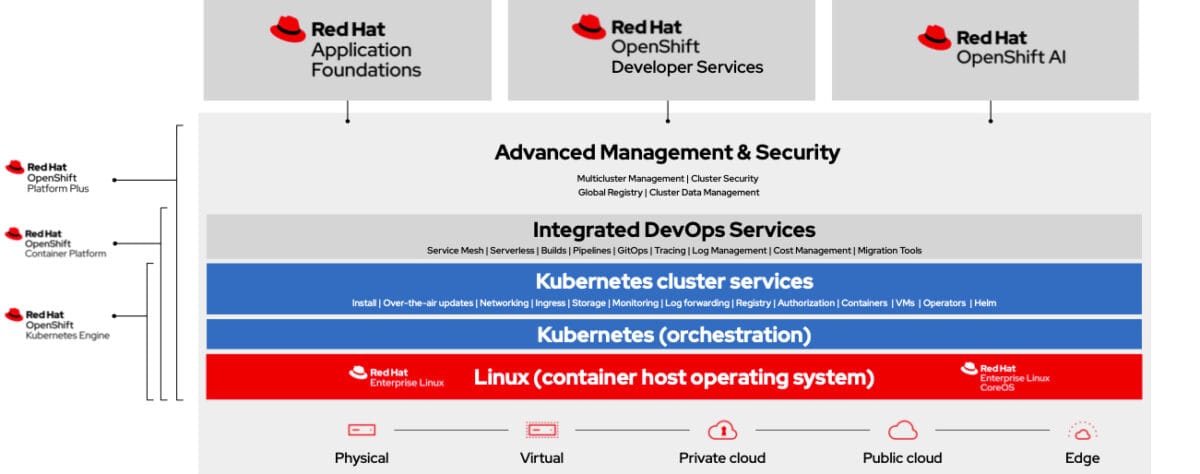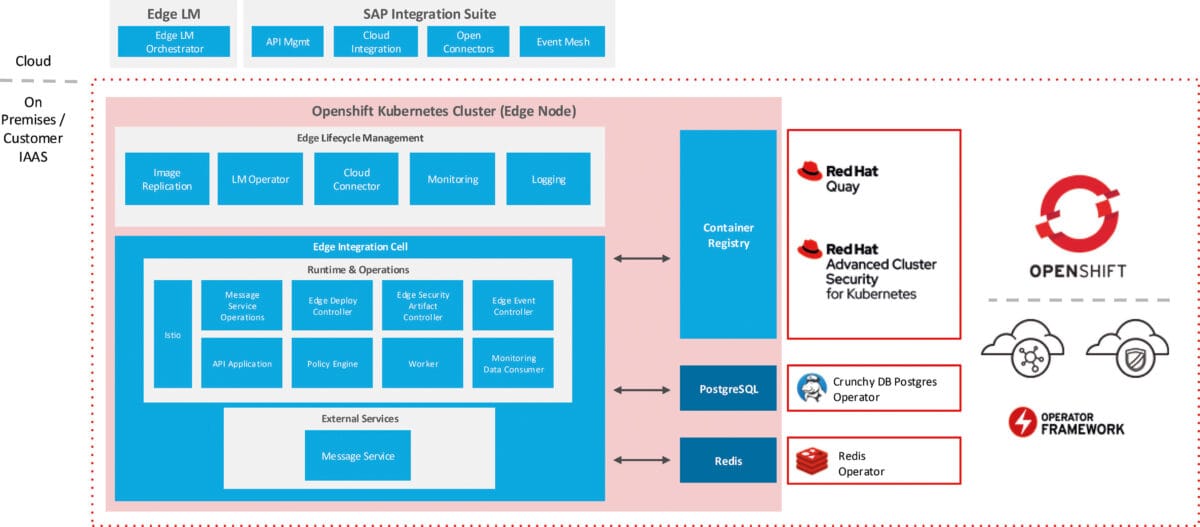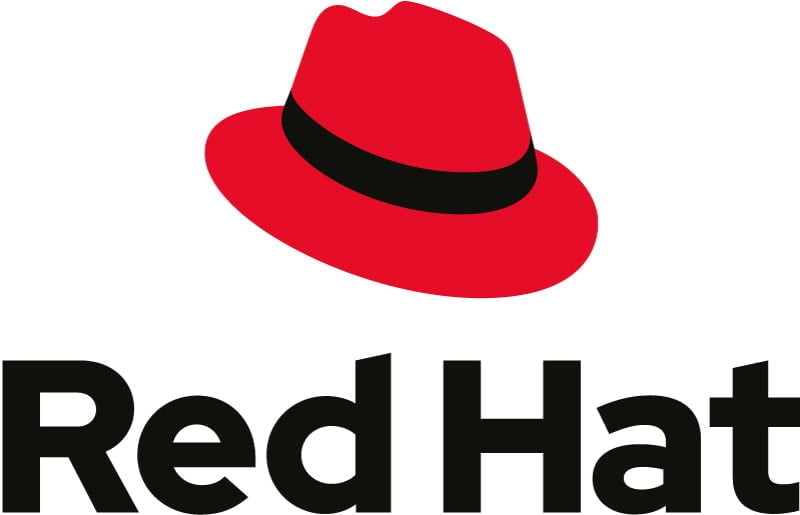The Hybrid Cloud as an Indispensable Driver of the Digital Future


Monolithic architectures and applications hinder the end-to-end digitalization of business and administrative processes. Ultimately, only a modern hybrid cloud environment that offers openness, flexibility and independence and can therefore act as a driver of innovation offers maximum future security.
There is no question that many German companies and the public sector must continue to actively drive digitalization forward. The new German government has also set an important course by establishing its own digital ministry and establishing clear guidelines. The coalition agreement explicitly states: "Our digital policy is geared towards sovereignty, innovation and social progress."
Comprehensive digitalization involves the smooth and efficient use of new developments and technologies such as cloud-native architectures, microservices, edge computing and AI models. At the same time, the current geopolitical challenges and macroeconomic changes, which also have an impact on the definition of an IT strategy, must not be ignored. Digital sovereignty in particular is becoming increasingly important here.

Hybrid cloud platform as the ideal infrastructure basis
The decision for the optimal infrastructure and IT platform must be at the heart of a future-oriented IT strategy. In view of the diverse challenges, an open, standardized hybrid cloud platform is emerging as the ideal environment. A standards-based approach to IT environments and infrastructures gives companies the consistency they need to reduce complexity and costs. Criteria such as flexibility and security should be met, portability supported and an extensive ecosystem should be usable.
Hybrid cloud models combine on-premises and off-premises resources. This allows companies to benefit from the scalability of a public cloud on the one hand and the flexibility of a private cloud for implementing requirements in areas such as security, data storage and processing or risk management on the other. An integrated platform supports all operating environments from the company's own data center and edge environments to local cloud providers or the large public cloud providers.
The advantages of a standardized, centralized and open infrastructure and application platform, such as that provided by Red Hat OpenShift, are manifold. These include flexibility in the choice of cloud provider. This allows companies to freely choose the appropriate IT infrastructure options for deploying and running applications from different cloud offerings, which can be changed and mixed at any time. There is also a high degree of portability. This means that workloads can be quickly moved between public cloud providers or from the cloud back to the company's own data center, depending on the company's own guidelines, the requirements of the market or the specifications of regulatory authorities.
Another important criterion when evaluating an application platform is the underlying ecosystem. The more comprehensive and better networked it is, including cloud, software and hardware partners, the more synergies there are for users. Many companies also attach particular importance to an operating system option that is certified for integration with SAP S/4HANA.
is. It provides the secure, scalable and reliable basis to support the specific requirements of business-critical SAP workloads.
Virtual machines and containers on one platform
It is clear that the increasing use of hybrid clouds has also brought about a massive change in application development and deployment. No one disputes anymore that containers and Kubernetes are the future of application infrastructure. Containers enable developers to create efficient cloud-native applications that can be integrated with new technologies such as AI. In addition, container orchestration platforms have introduced tools and automation to help IT teams optimize the lifecycle management of these modern applications in large hybrid cloud environments.

It should not be forgotten that con-tainers and cloud-native applications can also overcome the limitations associated with traditional VM architectures. These include efficient support for application development and modernization or the use of new developments in microservices or serverless computing. For more than two decades now, companies have been relying on virtualization technologies to provide applications and services, and virtual machines will continue to have their place in the future - even if the rising costs on the user side currently have to be taken into account. Virtualization is suitable, for example, for hardware-related or traditional applications that are only changed in longer cycles. In addition, not all applications can be containerized without further ado.
The question now arises as to how companies can best reconcile the two topics of virtualization and containers. Operating two silos in parallel is by no means the best way to do this. This is precisely where new cloud-native application platforms come into play, which consistently support both virtual machines and containers in hybrid cloud environments in terms of management and operation. On the one hand, this enables companies to deploy and manage all virtualized and containerized workloads with uniform processes and tools. On the other hand, they have the opportunity to use innovations in areas such as development and pipelines, git ops, service meshes or serverless technologies. This allows them to bridge the gap between the execution of traditional virtualized workloads and application modernization using cloud-native concepts.
Open source as a key factor
The term open source is inevitably associated with hybrid cloud platforms, as open source technologies play a central role in the design and operation of hybrid cloud environments. Open source creates the technological basis for interoperability, flexibility, transparency and control. Users of open source gain greater independence from suppliers and therefore greater flexibility when selecting solutions. This is why open source is becoming increasingly important, particularly with regard to digital sovereignty. The coalition agreement states the following in the section "We will ensure our digital sovereignty": "We will define open interfaces and open standards across all levels and drive open source forward in a targeted manner with the private and public players in the European ecosystem (...). To this end, we are strategically aligning our IT budget and defining ambitious goals for open source." This means that the importance of open source and its immense potential has now been fully recognized in politics. After all, Linux, open source and open standards have been a success story in IT for more than 30 years.
AI and open source
The spectrum of AI applications ranges from simple consumption of commercial services such as Copilot, Joule or Gemini to embedding and integration into own applications, fine-tuning, model training and agent workflows in controlled, proprietary environments and landscapes. Whenever AI is to be used productively in business-critical areas under your own control, open source is of crucial importance. This creates the basis for "trustworthy AI", whose guiding principles are explainability, fairness, robustness and controllability of AI models. Prototypes are built quickly, but the transition to scaled production environments poses many more challenges. It turns out that an open Kubernetes-based hybrid cloud platform with security controls, versioning and archiving can provide the optimal basis for AI and ML implementation, with the objective: Any Model - Any Accelerator - Across the Hybrid Cloud. A hybrid environment is advantageous because users need local, edge and cloud resources to carry out their AI projects efficiently and securely. One reason for this is that the immense computing power required for powerful AI models must be reconciled with data security and sovereignty. After all, when using AI applications, the strict security, compliance and governance guidelines of the EU AI Act must be taken into account, among other things. Overall, a hybrid cloud platform can serve as a foundation for AI model development, AI model training and ultimately for embedding AI models in company or government applications, for example. Ideally, the platform also offers access to certified AI/ML partners as part of an ecosystem concept. This enables companies to use complete solutions for developing, providing and managing ML models for AI-supported, intelligent applications relatively easily and quickly.
Red Hat believes that the future of AI will be open source and that companies will generate more value from smaller, application-specific models that they train with their own data. With Red Hat Enterprise Linux AI (RHEL AI) and InstructLab, for example, Red Hat offers companies the opportunity to train and run models at low cost. InstructLab is an open source project launched by IBM and Red Hat that supports simplified experimentation with generative AI models and optimized model adaptation. With Red Hat OpenShift AI, Red Hat also provides a flexible, scalable AI/ML platform that can be used to develop and deploy AI-powered applications in hybrid cloud environments.
SAP and open source platforms
Due to the numerous advantages, open hybrid cloud platforms and open source will play a central role in the IT infrastructure and digital transformation of most companies and the public sector in the coming years. This is particularly true for SAP users with their upcoming migration and modernization projects. A container management platform creates the best prerequisites for modernizing SAP applications, as it can be used to modernize in-house ABAP developments, for example, in line with SAP's "Keep the Core Clean" strategy and further develop them with modern open source tools and frameworks.
A current example shows the potential of a hybrid cloud platform such as Red Hat OpenShift: the currently much-discussed introduction of the SAP Edge Integration Cell (EIC), which will replace the SAP Process Integration (PI) and Process Orchestration (PO) solutions. EIC enables companies to flexibly operate APIs, data sources and SAP services locally in their own data center or in a private cloud environment as well as integration with SAP cloud environments such as the SAP Business Technology Platform (BTP). The new solution is based on modern cloud-native open source frameworks and container technology. This means that the conventional orchestration and integration of SAP landscapes is being replaced by a cloud-native version of integration as part of cloud modernization. EIC is therefore further proof that SAP is increasingly opening up to open source platforms.
The operation of business-critical EICs requires a stable foundation, which is exactly what a Kubernetes-based platform offers. It contains all the necessary components "out-of-the-box" for the secure operation of business-critical SAP applications. This includes high availability, networking, storage, authentication, security, logging and monitoring. Such a platform is available with the leading enterprise-grade Kubernetes platform Red Hat OpenShift, which has been released for EIC since summer 2024.
SAP users should therefore definitely use the S4/HANA migration or EIC implementation as an opportunity to build a stable open source foundation with a high degree of automation. On the one hand, this can significantly optimize the provision, operation and monitoring of an EIC environment. On the other hand, it also creates an identical basis for future innovations. One example of this is AI integration, particularly as a supplement to and for the integration of Joule and BTP.
In order to drive the digital transformation forward efficiently, hardly any company, including the public sector, will be able to avoid using modern applications, technologies and architectures. A key success factor here is choosing the right target platform and architecture. Openness, standardization, security, agility, flexibility and independence should be key criteria. A comprehensive Kubernetes-based application platform such as Red Hat OpenShift can form the central, future-proof basis for this.
To the partner entry







